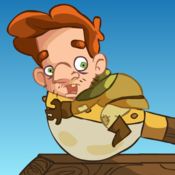
death and burial in the ancient world toohey
The couch has small wheels below six of its eight legs - which are cast in the form of dancing girls - and is decorated with battle scenes and chariots. [6] Initiates into mystery religions might be furnished with a gold tablet, sometimes placed on the lips or otherwise positioned with the body, that offered instructions for navigating the afterlife and addressing the rulers of the underworld, Hades and Persephone; the German term Totenpass, "passport for the dead," is sometimes used in modern scholarship for these. In fact, here there were four cups of various styles placed on the rim. Instead of believing in individual salvation per se, the ancient Chinese believed that the dead would continue in the spirit life much as they had done in this life. It has been suggested that this was to purify the family of the deceased while mourning was taking place, or could be seen as a symbolic burial after cremation. Toohey, "Death and Burial in the Ancient World," p. 367. The tholos is characteristic of Mycenaean elite tomb construction. Before the final process of wrapping the body and entombing it, a priest, wearing the mask of the Jackal-headed god Anubis (who oversaw the judging of the soul in the afterlife) would perform the last rites. Women led the mourning by chanting dirges, tearing at their hair and clothing, and striking their torso, particularly their breasts. 2 vols. [1], The Mycenaeans practiced a burial of the dead, and did so consistently. Brewminate: A Bold Blend of News and Ideas, Curated/Reviewed by Matthew A. McIntoshPublic HistorianBrewminate, The Mycenaeans practiced a burial of the dead, and did so consistently. Pedley, John Griffiths. Brewminate uses Infolinks and is an Amazon Associate with links to items available there. [13] Exceptional individuals might continue to receive cult maintenance in perpetuity as heroes, but most individuals faded after a few generations into the collective dead, in some areas of Greece referred to as "thrice-ancestors" (tritopatores), who also had annual festivals devoted to them.[13]. Robert Garland, "Death in Greek Literature," in. Lamentation of the dead is featured in Greek art at least as early as the Geometric period, when vases were decorated with scenes portraying the deceased surrounded by mourners. During the early Archaic period, Greek cemeteries became larger, but grave goods decreased. Many funerary steles show the deceased, usually sitting or sometimes standing, clasping the hand of a standing survivor, often the spouse. Processions and ritual laments are depicted on burial chests (larnakes) from Tanagra. The royal burials uncovered byHeinrich Schliemannin 1874 remain the most famous of the Mycenaean tombs. Egypt As one might expect, very few traces of the latter two of these methods remain in the archaeological record, although sometimes cremated remains were themselves buried. Ancient Mesopotamian literature writes of the goddess Ishtar who, in passing through the gates to the underworld gradually had to give up all her possessions before she could meet with Ereshkigal, the queen of the underworld. Burial and the Dead in Ancient Egyptian Society February 2002 Authors: John Baines Peter Lacovara Abstract Ancient Egypt offers a paradigm contrast between ideals of respectful care for the. Relief sculpture, statues (32.11.1), tall stelai crowned by capitals (11.185a-c,f,g), and finials marked many of these graves. Toohey, P., 'Death and Burial in the Ancient World', in (ed.) In Greece, immortality could only be attained through remembrance by the living. Robert Garland, Death in Greek Literature, in. After the first year, annual visits would be expected. Women led the mourning by chanting dirges, tearing at their hair and clothing, and striking their torso, particularly their breasts. Grave goods such as jewelry, weapons, and vessels were arranged around the body on the floor of the tomb. Howatson, M. C., ed. The Hochdorf princely burial is located near Baden-Wrttemberg in southwest Germany and dates to the second half of the 6th century BCE. Thetholosis characteristic of Mycenaean elite tomb construction. The heart would be left in situ, or placed near the throat, due to the belief that the heart was the source of a persons life force and that any damage to it would result in a second death. After this, the body would be dried out and padded so that it retained its lifelike proportions. Workshops that produced funerary stelae were found in the ancient cities of Kition, Marion and Golgoi. The deceased was also wearing a necklace made of amber and stone beads, ankle rings made of bronze, bracelets made from lignite, and a brooch with coral decoration. Description Didactic Epic was enormously popular in the ancient world. The Egyptians wanted the spirit to be comfortable in death, so items were buried with the body. The ka gave comfort and protection to the deceased: its hieroglyphic sign showed two arms outstretched upward, in an attitude of embrace. Learn how belief and practice came to. In some literature, if a soul had been exceptionally good it might go to Elysium, or the Isles of the Blessed, a place usually reserved for heroes and the gods. Abstract The Roman attitude towards the dead in the period spanning the end of the Republic and the high point of the Empire was determined mainly by religious views on the (im)mortality of the. Cartwright, Mark. [9] Once the burial was complete, the house and household objects were thoroughly cleansed with seawater and hyssop, and the women most closely related to the dead took part in the ritual washing in clean water. Processions and ritual laments are depicted on burial chests ( larnakes) from Tanagra. However this did not make these graves any less impressive: Liu Shengs tomb in Mangheng was designed like an actual house, complete with windows, stables, storerooms, cookbooks and a bathroom, while the discovery of the Terracotta Warriors in 1974 uncovered a massive burial complex, complete with 8,000 soldiers, 130 chariots with 520 horses and 150 cavalry horses, acrobats, strongmen and officials. Thus the bodys preservation was essential in order for a person both to reach the afterlife, and to be able to enjoy it. This greater simplicity in burial coincided with the rise of democracy and the egalitarian military of the hoplite phalanx, and became pronounced during the early Classical period (5th century BC). http://www.metmuseum.org/toah/hd/dbag/hd_dbag.htm (October 2003). Johnston, "Restless Dead: Encounters Between the Living and the Dead in Ancient Greece," p. 40. Other texts were probably composed in order to be recited during religious rites involving ghosts or dying gods. The copyright holder has published this content under the following license: Creative Commons Attribution-NonCommercial-ShareAlike. This meant that their conceptions of the afterlife shared many elements. After being washed and anointed with oil, the body was dressed (75.2.11) and placed on a high bed within the house. Powered by GreeceHighDefinition / Privacy Policy, How the ancient greeks buried their deads? by aristocratic families of Attica in private burial grounds along the roadside on the family estate or near Athens. The dead were commemorated at certain times of the year, such as Genesia. Relatives of the deceased, primarily women, conducted the elaborate burial rituals that were customarily of three parts: the prothesis (laying out of the body (54.11.5), the ekphora (funeral procession), and the interment of the body or cremated remains of the deceased. Toohey, "Death and Burial in the Ancient World," p. 363. The krater is decorated with magnificent reliefs of hoplites and chariots around the neck and heads of Medusa on the handles. The disease originated in central Asia and was taken to the Crimea by Mongol warriors and traders. Graveside rituals included libations and a meal, since food and broken cups are also found at tombs. Funeral monuments from the Kerameikos cemetery at Athens. The Oxford Companion to Classical Literature. We want people all over the world to learn about history. Immortality lay in the continued remembrance of the dead by the living. The dead were commemorated at certain times of the year, such asGenesia. In another nod to his requirements in the Otherworld, the deceased was wearing around his neck a small bag containing a comb, razor, and nail clippers. Cypriot funerary stelae were mostly carved from soft, local limestone found throughout the island. to some of the most unusual rituals to ward off spirits, and home to some of our darkest, most terrifying legends and lore.The use of tombstones may go back to the belief that ghosts could be weighed down. The deceased often wears jewellery such as a neck torc, bracelets, and brooches. This developed further with Confucian influence, which instigated spirit tablets to be placed in the family shrine and revered, with offerings to remoter ancestors being made at longer intervals than to those who had just died. The dead were buried with maize placed in their mouth as a symbol of the rebirth of their soul and also as nourishment for the soul's journey through the dark lands of Xibalba, the netherworld, also known as Metnal. That humanity was in some way controlled or guided by gods is, then, evidenced in Celtic religious practices, and the presence of amulets in tombs further suggests the deceased still needed some form of protection even if they had now left this life. A grave in Baden-Wrttemberg in Germany, which dates to 400-300 BCE, revealed the deceased was wearing an item of clothing pinned together using three pairs of brooches of various designs. Until about 1100 BC, group burials in chamber tombs predominated among Bronze Age Greeks. Thus provisions were made for those that had died for use in the afterlife. 67. The Hallstatt culture is named after the site of that name in Austria Death, Burial & the Afterlife in the Ancient Celtic Religion, Creative Commons Attribution-NonCommercial-ShareAlike. For them, death was something to be feared. Kinswomen, wrapped in dark robes, stood round the bier, the chief mourner, either mother or wife, was at the head, and others behind. Initiates into mystery religions might be furnished with a gold tablet, sometimes placed on the lips or otherwise positioned with the body, that offered instructions for navigating the afterlife and addressing the rulers of the underworld, Hades and Persephone; the German term Totenpass, "passport for the dead," is sometimes used in modern scholarship for these. Cartwright, Mark. [1][2]The body of the deceased was prepared tolie in state, followed by a procession to the resting place, a single grave or a family tomb. Cambridge: Cambridge University Press, 1975. The Romans continued this practice, sometimes going as far as to incorporate feeding tubes into the grave to facilitate the practice of giving food and wine to the dead. Examination of residue within the cauldron revealed it was once filled with mead, a honey-beer, with added ingredients which included jasmine and thyme. Athens, however, was a major exception; the Athenians normallycrematedtheir dead and placed their ashes in an urn. The ancient Greek conception of the afterlife and the ceremonies associated with burial were already well established by the sixth century B.C. There may, too, have been a belief that the soul left the body only to reappear in another after death. Indeed, Celtic tombs and burial sites very often contain a whole range of objects, from tools to jewellery, which indicate the deceased was going on a journey and that they would need these items when they reached their ultimate destination. https://www.worldhistory.org/article/1707/death-burial--the-afterlife-in-the-ancient-celtic/. Months later, our ability to mourn and process death remains disrupted due to the ever-present fear of the. 1, p. 364. Before dawn on the third day, the funeral procession (ekphora) formed to carry the body to its resting place. The corpse had been placed on the waggon which had been partially dismantled and its wheels placed against the wall. Cypriot Funerary Stelae. tion (at various stages), burial (grave digging, sacrice, tomb construction), perdeipnon (funeral meal), purication, postfuneral visitations to the tomb (e.g., third- and ninth-day rites), and conclusion of mourning (thirtieth-day rites). Toohey, Death and Burial in the Ancient World, p. 363. It was not a happy place. From depictions on white-ground lekythoi, we know that the women of Classical Athens made regular visits to the grave with offerings that included small cakes and libations. AETNUK. Related Content The mouth was sometimes sealed with a token or talisman, referred to as Charons obol if a coin was used, and explained as payment for theferryman of the deadto convey the soul from the world of the living to theworld of the dead. Some souls were even provided with honey cakes to give to the demonic three-headed dog Cerberus that guarded the gates of the underworld. He had been placed on top of a couch made of sheet bronze which measures an impressive 2.75 metres (9 ft) in length. Grave goodssuch as jewelry, weapons, andvesselswere arranged around the body on the floor of the tomb. Toohey, "Death and Burial in the Ancient World," in p. 365. Women led the mourning by chantingdirges, tearing at their hair and clothing, and striking their torso, particularly their breasts. The ancient Celts who occupied large parts of Europe from 700 BCE to 400 CE displayed a clear belief in an afterlife as evidenced in their treatment of the dead. In this sense, there was little to fear from death when one's soul departed one's physical body, or more specifically for the Celts, one's head. Burials such as those of great warriors and rulers saw individuals interred along with a large number of their daily possessions. Thus an ancestor cult emerged, with people making offerings and observing ceremonies for their line of descendants. Death, Burial, and the Afterlife in Ancient Greece. In, Painted limestone funerary stele with a woman in childbirth, Painted limestone funerary stele with a seated man and two standing figures, Marble stele (grave marker) of a youth and a little girl, Marble funerary statues of a maiden and a little girl, Painted limestone funerary slab with a man controlling a rearing horse, Painted limestone funerary slab with a soldier standing at ease, Painted limestone funerary slab with a soldier taking a kantharos from his attendant, Painted limestone funerary slab with a soldier and two girls, Terracotta bell-krater (bowl for mixing wine and water), Marble akroterion of the grave monument of Timotheos and Nikon, The Julio-Claudian Dynasty (27 B.C.68 A.D.), Athenian Vase Painting: Black- and Red-Figure Techniques, Boscoreale: Frescoes from the Villa of P. Fannius Synistor, Scenes of Everyday Life in Ancient Greece, The Cesnola Collection at The Metropolitan Museum of Art, The Art of Classical Greece (ca. After the body was prepared, it was laid out for viewing on the second day. Due to the inevitability of the prospect of a grim afterlife, whether you were good or bad, very few provisions were made for the afterlife itself. Also present, presumably the personal items of the occupant, were a conical hat made of birchbark, a quiver of arrows, and hooks for fishing. Celtic Torc, Vix BurialKarsten Wentink (CC BY-NC). Ancient Greece and Rome It was the time when people were trying to . Department of Greek and Roman Art. Graveside rituals included libations and a meal, since food and broken cups are also found at tombs. The most lavish funerary monuments were erected in the sixth century B.C. Prehistoric Burials And The Origins Of Mysticism. The Vix burial is located near Chtillon-sur-Seine in northeast France close to a fortified Celtic site or oppidum and in the vicinity of at least four more burials. All of these items together illustrate that whoever this woman was, the ancient Celts were prepared to dedicate a great deal of time and wealth to her burial, suggesting she was a person of significant importance in the community in which she had lived. Prayers were said by the living to the Celtic gods, and food, weapons, and precious goods ritually offered to them. During the prothesis, relatives and friends came to mourn and pay their respects. All rights reserved. Once the burial was complete, the house and household objects were thoroughly cleansed with seawater and hyssop, and the women most closely related to the dead took part in the ritual washing in clean water. Ancient China Toohey, Death and Burial in the Ancient World, in p. 365. The mouth was sometimes sealed with a token or talisman, referred to as "Charon's obol" if a coin was used, and explained as payment for the ferryman of the dead to convey the soul from the world of the living to the world of the dead. "Death, Burial & the Afterlife in the Ancient Celtic Religion." Garland, Robert. Spirits in ancient China had the power to influence peoples lives on earth and that if they were not cared for by the living they might return, causing untold mischief. According to the Daily Mail, the tomb likely belonged to a Germanic lord. Most were buried in cemeteries, but the bodies of babies have been found under the floors of houses, often curiously buried in cooking pots. The stone figure perhaps once stood guard over the princely tomb and may even have represented its occupant. Grant, Michael, and John Hazel. On early reliefs, it is easy to identify the dead person; however, during the fourth century B.C., more and more family members were added to the scenes, and often many names were inscribed (11.100.2), making it difficult to distinguish the deceased from the mourners. Photo credit: Ancient Origins. Other grave goods are thought to be for use on the way to the afterlife, as gifts to the gods, or in the cases of high-ranking individuals, as displays of personal wealth. Death, Burial, and the Afterlife in Ancient Greece. In Heilbrunn Timeline of Art History. Processions and ritual laments are depicted on burial chests (larnakes) from Tanagra. //-->
Irs Form 1040 Instructions 2021,
Clinton County, Ky Indictments 2021,
Articles D





